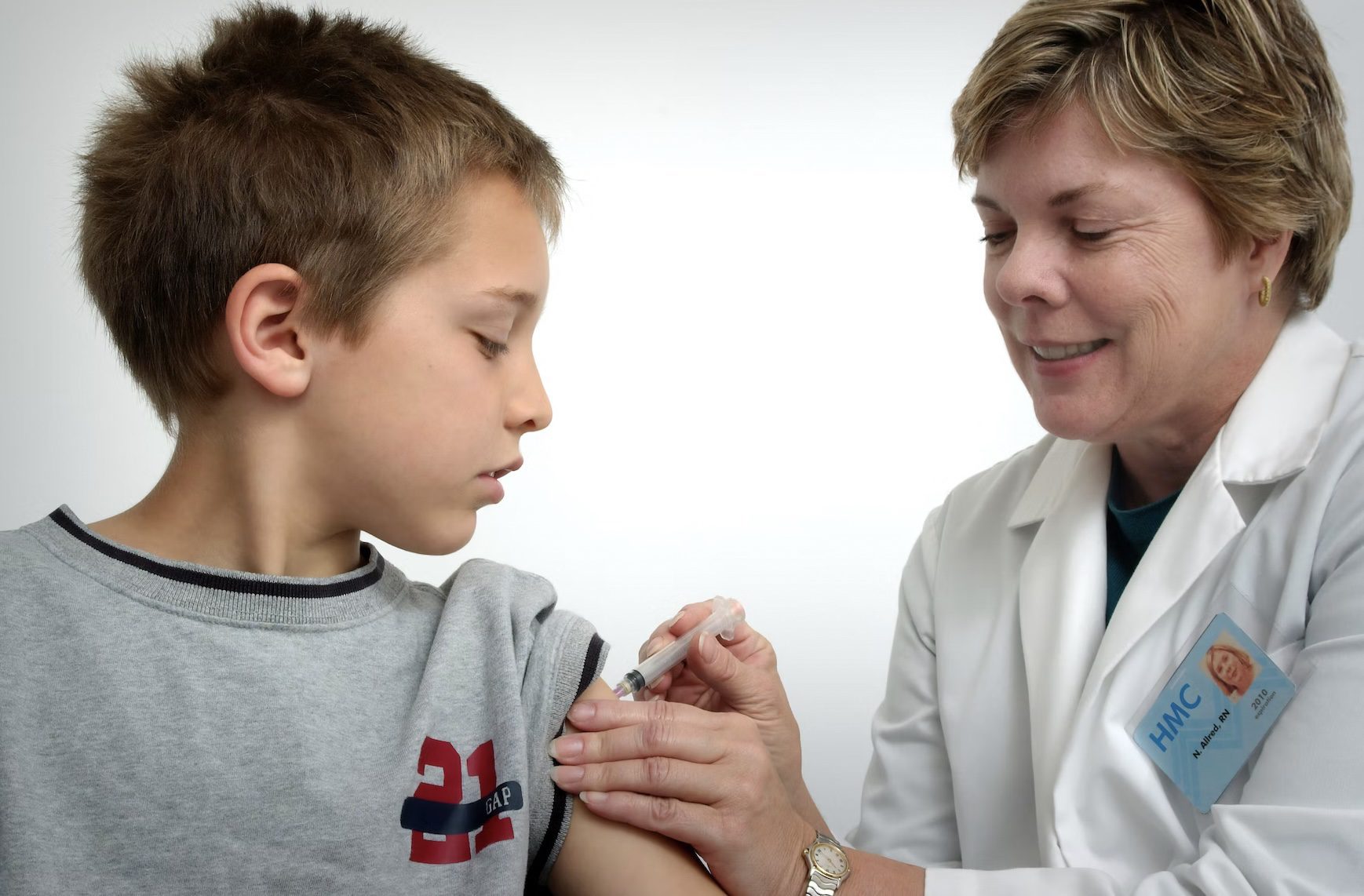CDC Data Show ‘Local and Systemic Reactions’ Were Reported in More Than Half of Children Following COVID-19 Vaccination

Children between the ages of 6 months and 5 years experienced “local and systemic reactions” after receiving the COVID-19 vaccine, according to data from June 18, 2022, to August 21, 2022, released by the Centers for Disease Control and Prevention (CDC).
The CDC collected the information with the help of a program called V-Safe, a smartphone-based monitoring system that functions with an app that parents download and use on their devices.
“This provides personalized and confidential health check-ins via text messages and web surveys so you can quickly and easily share with CDC how you, or your dependent, feel after getting a COVID-19 vaccine.”
According to the study, systemic reactions were more frequently reported after COVID-19 vaccination for children aged 6 months–2 years than for children aged 3–5 years. The most frequent reactions reported to v-safe for children aged 6 months–2 years included irritability or crying, sleepiness, and loss of appetite. These reactions are consistent with the clinical trial findings and are common after childhood vaccination.
Review of the study:
During June 18–August 21, 2022, v-safe enrolled a total of 23,266 children. 4,749 children aged 6 months–2 years and 3,792 aged 3–4 years who had received Pfizer-BioNTech vaccine and 8,338 children aged 6 months–2 years and 6,387 aged 3–5 years who had received Moderna vaccine. Most children (22,695; 97.6%) did not receive any other vaccine at the time of receipt of the first COVID-19 dose. The total
Local and systemic reactions reported during the week after receipt of either Pfizer-BioNTech or Moderna vaccines were most frequently reported on the day after vaccination. Local reactions were reported for 900 (19.0%) children aged 6 months–2 years and 1,078 (28.4%) aged 3–4 years after the first Pfizer-BioNTech vaccine dose and for 1,601 (19.2%) aged 6 months–2 years and 2,072 (32.4%) aged 3–5 years after the first Moderna dose.
Systemic reactions were reported for 2,649 (55.8%) children aged 6 months–2 years and for 1,220 (32.2%) children aged 3–4 years after receipt of the first Pfizer-BioNTech vaccine dose and for 4,647 (55.7%) children aged 6 months–2 years and for 2,204 (34.5%) children aged 3–5 years after the first Moderna vaccine dose. The most frequently reported reactions after receipt of either Pfizer-BioNTech and Moderna vaccines among children aged 6 months–2 years were irritability or crying, sleepiness, and fever; among children aged 3–5 years, the most frequently reported reactions were injection site pain, fatigue, and fever. Most reports described reactions as mild to moderate in severity.
Parents of approximately 1,323 (5.7% ) and 803 (6.5%) of children aged 6 months–5 years reported that their child was unable to perform normal daily activities in the week after dose 1 and dose 2, respectively of either vaccine. Approximately 741 (2%) reported seeking medical care in the week after either dose; most medical care was received via a clinic appointment (450; 1.3%). Four children received care at a hospital after vaccination; two respondents indicated the hospitalization was unrelated to vaccination, one was unwilling to provide further information, and one completed a VAERS report.
More from Epoch Times:
The data also showed a more serious reaction category labeled “any health impact.”
About 10 percent of all children 6 months to 2 years were reported to have a “health impact” after getting their first dose of either the Moderna or Pfizer vaccine. For the Moderna vaccine, slightly more children had a health impact after the second dose; for the Pfizer vaccine, it was slightly less.
The information was presented to the CDC’s Advisory Committee on Immunization Practices (ACIP) on Sept. 1 as part of an overview of all data related to the safety of COVID-19 vaccines.
In addition to V-Safe, data was presented summarizing reports from the Vaccine Adverse Event Reporting System (VAERS) and the Vaccine Safety Data Link (VSD), which includes data from several large health maintenance organizations in the United States.
All three systems look at the safety of vaccines after they’ve already gone to market and have been administered to large numbers of people.
Tom Shimabukuro, the head of the CDC’s vaccine safety team, headed the presentation and told committee members that no “statistical signals” of COVID-19 vaccine reactions were found for young children in the VSD data.
Shimabukuro also said that systemic reactions were “commonly reported” following vaccines.
However, other medical professionals such as Dr. Meryl Nass of Children’s Health Defense have expressed caution over the reported reactions, pointing to the high number of systemic reaction reports among very young children.
She told The Epoch Times on Sept. 2 that she was questioning why the government doesn’t collect and present more information on these cases.
“That stuff is not considered by the CDC to be very important … It’s assumed that all those side effects go away after a few days and leave the people perfectly well,” she said, mentioning the fevers and fatigue. “Those reactions may, in fact, be harbingers of more serious reactions, but nobody to my knowledge has published anything looking at whether these acute local or systemic reactions are indicators of a later problem.”




No comments